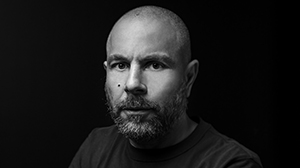

Giovanni Capriotti, a Multimedia Image/Video Producer at the University of Guelph-Humber, is a documentary photographer and videographer whose work has appeared in the Toronto Star, the Montreal Gazette, the Globe and Mail, Maclean’s Magazine, Der Spiegel, National Geographic Italy, La Stampa, Corriere della Sera and UNHCR campaigns and publications.
His work has been honoured by the Lucie Foundation IPA, the PX3 Prix De La Photographie Paris, the Tokyo International Photo Awards, and NPAC. His series, “Boys Will Be Boys,” took first place in the sports category at the prestigious 2017 World Press Photo Contest.
We asked Capriotti to share his experiences building his portfolio and pursuing a career in images.
When did you first know you wanted to be a photographer?
It’s a funny story. My grandmother used to work in a pension, which is kind of a cheap hotel in Rome near all the tourist attractions. When I was 11 or 12 she came home with an old-school Yashica camera. It’s one of those cameras that’s got the viewfinder, you look from the top. I became fascinated by this tool that was brought to my house by chance. I started dreaming of doing photography. After that I received a Polaroid for my first communion. Eventually, a long time after that, I decided to enroll in the photography program at the London College of Communications in England. That’s how I started with film photography and photography in general.
How did you build your portfolio and find work early on?
This is another funny thing. I was going to school in England and I was having fun being an active part of the local club scene in London. I was fascinated by the culture, and I was taking pictures of people taking part in the same scene I was. That was the beginning of my portfolio. Eventually, I started travelling across Europe. Eventually after I got back from the national service, I put photography on hold and got a job with an airline. I started travelling around the world. Eventually, I became one of the photographers for the airline’s in-flight magazine, and that helped me develop my portfolio further and my style in general. I had the chance to go places, meet people, and do work that was way beyond traditional travel photography.
Tell me about the series that won the World Press Photo Contest, “Boys Will Be Boys.”
I came to Canada from Italy because I married a Canadian woman back in 2009. I didn’t know anybody when I came here. I was trying to make friends. So I went to a Pride weekend celebration in Toronto and I took part in a race. Before the race, I spotted these guys handing out pamphlets looking for new players for an LGBTQ-inclusive rugby team. I thought to myself, I like rugby, I should play with them so I can make some friends and get a social life. At the same time, I wanted to be a photographer, so I thought about the risk of rugby – I could break fingers or wrists. I put the rugby idea to the side, but I kept the pamphlet.
Eventually, in 2013 I went to Loyalist College to study photojournalism. One of my assignments was to come up with three ideas per week. I looked at that pamphlet at home and it struck me that it could be one of those stories. Still, I put it on hold.
When I graduated I had to start freelancing and getting in touch with the editors – start hustling basically. I got in touch with the Globe and Mail and I pitched the story. It took me a couple weeks to shoot the whole story. It got published in the Globe and Mail, it gained a little bit of momentum with the Pride week, but then it went back on the shelf.
That same year, 2015, one of the guys from the team asked if I was interested in continuing to tell their story, because they were travelling to Nashville for the Bingham Cup (a world championship for gay and inclusive rugby). During that trip and the week I spent with the team, I solidified the relationships I had with the players and gained total access to the team on and off the pitch. I started thinking about the contrast between a game like rugby that is considered a macho game being played by people who might otherwise be stereotyped in a different way.
The series is about the idea that masculinity and femininity should be valued equally. And it’s about inclusion and sport. Most of these guys have felt threatened or unwelcome in locker rooms, so they created this team as a safe space for anyone who wants to play a team sport.
Obviously, it’s a competitive industry. What do you tell people just beginning to build a career in photography?
The best piece of advice that I can give to somebody who wants to start a career in photography is to find your own voice and stay independent. That means you shouldn’t shoot to win awards and you shouldn’t shoot to be published in a specific publication – you should shoot because you want to create your own voice. After that, nothing will prevent you from adjusting that voice to suit the publication or medium that’s suitable for you – whether it’s mainstream media, a gallery or a book.
I believe everyone can learn the technique of photography. Everyone can buy a camera. But the most important thing is the craft of storytelling that you create by looking within yourself.







